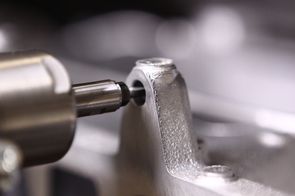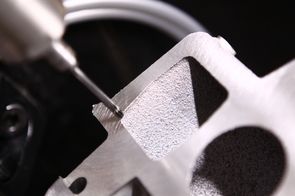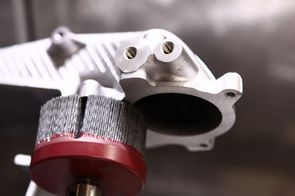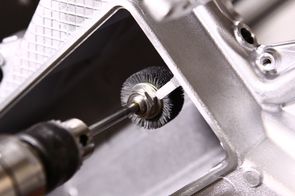Berger Blog
Robotic grinding technology at DeburringExpo
Robotic grinding technology at DeburringExpo




Schleifen + Polieren (6/2017)
From 10th to 12th of October 2017 DeburringExpo took place for the second time. At this special fair of deburring and polishing technology about 2,000 visitors informed themselves about the latest developments in the field of mechanical machining of workpieces.
With more than 2,000 visitors from 38 countries and 151 exhibitors, DeburringExpo was able to follow on from the success of the previous show. The bilingual expert forum with its 29 lectures and more than 1,000 participants was one of the highlights of the show.
Beside the machining of precision surfaces, deburring with robotic technology was one of the key issues. Especially deburring of small batches and relating thereto the machining of different geometries in one robotic cell was of great interest.
In his lecture about deburring of strips and pieces, Marco Chiesura, managing director of the Berger Gruppe, took this aspect into special account. Using the example of cutlery and cast parts, robotic grinding and deburring cells were presented where either the workpiece or the tool were guided by robot. For the machining of cutlery, the workpiece is robot guided. Different grinding and polishing units are employed. Position and tolerances of the workpiece, in this case a knife, are measured and corrected automatically by robot.
For the machining of cast parts either the workpiece or the tool is guided by robot, depending on the requirements and the size of the workpiece. When the cast part is guided the measurement of the workpiece can be executed by camera system. Subsequently, it is driven to the working station, in this case a milling station.
Depending on the requirements, the tool can be robot guided. A force control sensor is integrated into the robot controlling the pressure and the speed during the deburring process. If multiple deburring processes have to be executed one after another, a multi-spindle head can be employed machining the fixed workpiece with up to five rotating tools such as milling burrs, grinding pencils, grinding flap discs and brushes.
3D measuring probes can be integrated into the spindle head measuring single contour elements for the programming and control of the workpiece position during the production process. With special milling tools an even and small deburring edge is realized at cast iron parts. So even complex geometries can be machined reliably.
Furthermore, it is possible to add one or more CNC axes to position the workpiece.
